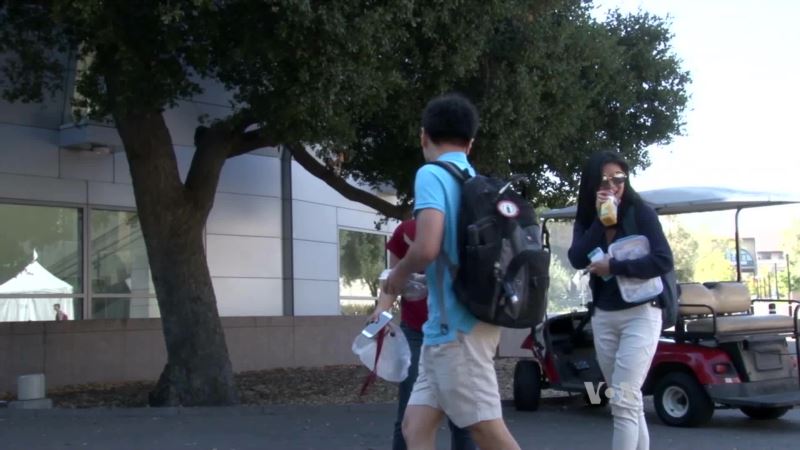There is a student on the campus of Stanford University in California’s Silicon Valley that is getting lots of attention. The student is a robot named Jackrabbot, after the jackrabbit, a relative of the rabbit and found in California. The Jackrabbot has been roaming the university campus to learn social skills so it can be polite in human company. The robot moves on a Segway platform and has multimodal sensors to help it learn. On this day, Jackrabbot is dressed in a hat and tie, causing people to stare or pull out their mobile phones and take its picture. “I thought it was really cute,” said Stanford University student Michelle Li, who crossed paths with the robot. “I didn’t know what it was, but I saw the hat and the tie and thought it was really cute” ‘A more polite robot’ One of Jackrabbot’s teachers is research scientist Alexandre Alahi of Stanford’s Computational Vision and Geometry Lab directed by Professor Silvio Savarese. “We basically want to develop a more polite robot that will understand how people behave,” said Alahi, who has always been interested in developing intelligent machines that can help humans. “We want the robot to able to, for instance, help elderly people to move around,” he said, adding, “Help blind people also to move, assist humans in their shopping, guide them around. Guide them in terms of evacuation and really share any social scene with humans by getting along well with them.” Alahi said that could include service robots offering drinks at a party. A service robot Mark Trenchard, who works with the web and technology on campus, met the robot and says a service robot would work if done correctly. “If it works then it becomes kind of invisible,” he said. “It’s just like a service to me, but if I see it doing weird things and like kind of getting in my way of getting that drink or whatever then I start to think I could just get it myself. Why do we have this robot slowing me down?” Alahi says safely and seamlessly interacting with humans in dynamic and often crowded environments is what Jackrabbot is trying to learn through what’s called a data-driven approach. Instead of writing rules in code for the robot to follow, Jackrabbot is learning by collecting data or experiences, to understand human behavior so it can predict what humans will do next. “In a data-driven approach you can also adapt to new scenes. … For instance, the way we interact in the U.S. is different than the way we interact in the U.K. or in Asia or in Iran, therefore if you have a software that can automatically learn from all these data without having humans in the loop, it will therefore make the machine smarter and adapt quickly to the new environment,” Alahi said. “I think it’s really interesting,” Li, a Stanford student, said. “The fact that we’ve always seen robots as not necessarily autonomous, but the idea that we’re trying to teach it social cues and give that human quality, I think that’s really cool.” By studying human behavior to become more human, robots may one day, be more integrated into the everyday lives of humans.
US Scientist Trains Robot to Learn to Be More Human




